Raytheon and Northrop Grumman Corporation have signed a teaming agreement to develop, produce and integrate Northrop Grumman’s scramjet combustors to power Raytheon’s air-breathing hypersonic weapons.
Scramjet engines use high vehicle speed to forcibly compress incoming air before combustion to enable sustained flight at hypersonic speeds. Such speeds reduce flight times and increase weapon survivability, effectiveness and flexibility.
“The Raytheon/Northrop Grumman team is quickly developing air-breathing hypersonic weapons to keep our nation ahead of the threat,” said Dr. Thomas Bussing, Raytheon Advanced Missile Systems vice president in a press release.
“This agreement combines Raytheon’s decades of tactical missile expertise with Northrop Grumman’s extensive scramjet engine development experience to produce the best possible weapons.”
Northrop Grumman and Raytheon say they are working under a $200 million Hypersonic Air-breathing Weapon Concept, or HAWC, programme contract to deliver an affordable, effective and producible cruise missile for DARPA and the US Air Force.
“This teaming agreement extends our strong partnership with Raytheon on this critical technology capability. Our deep heritage in propulsion, fuzes and warheads will help accelerate readiness of tomorrow’s missiles to meet range, survivability, safety and lethality requirements,” said Mike Kahn, vice president and general manager of Northrop Grumman’s Defense Systems.
“Together with Raytheon, we intend to make great strides toward improving our nation’s high-speed weapon systems, which are critical to enhancing our warfighters’ capabilities for greater standoff and quicker time to target.”
Under the agreement, Raytheon and Northrop Grumman will continue to collaborate on HAWC and future air-breathing hypersonic missiles.



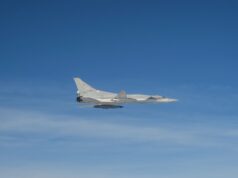
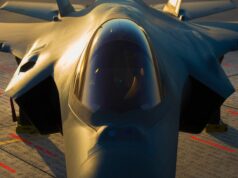

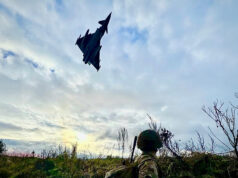
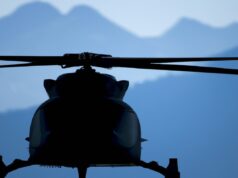
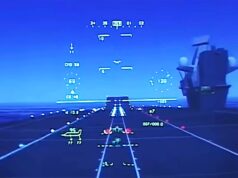
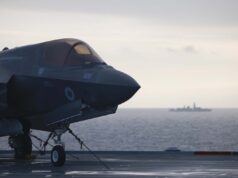
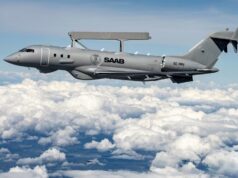
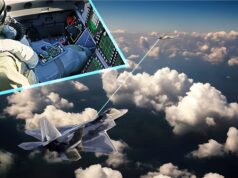

Why is it we seem far behind the curve in hypersonic land/naval attack missiles and are seemingly happy to do nothing about it? USA has now realised the lead China and Russia have got and are trying to do something about it by fast tracking various missile programmes. Us? Nothing. We seem happy to just plod on until the 2030’s with yesterday’s technology.
To my mind, all this does is signal that we are not a serious player anymore and have become toothless. We have not seemingly identified that future wars will be hugely affected by key assets being attacked by ballistic and hypersonic missiles, and just plod on slowly evolving older style systems. We will have no way to defend against or retaliate in kind soon and no one seems to really care. Russia and China have played it very smart really, pumping huge development into missiles that can hold us at bay whilst they catch up in all the other areas where they are lacking.
That certainly is the perception. I really would like to hear from military experts about these developments to get some idea as to the real threat and when it reaches true potency and where it leaves us in terms of its threat and contermeasures and so far I have heard nothing from that direction though as you say at least the US is finally responding in kind, if seemingly belatedly.
In the worst case scenario it certainly looks like potentially at least for the first time in many decades an imbalance in specific capabilities might develop in a vital conflict winning area and its presently like no one wants to mention it for fear of the public response and the cost monetarily and politically that could involve as a result. The old head in the sand response on the face of it.
One has to consider for example in present circumstances in the Gulf If Iran were given such weaponry they could seal the Strait of Hormuz create enormous effects upon Western economies and very possibly take out much of the American fleet if it wished leading to a likely total war response. I wonder what Russia’s view of such a situation in the gulf might be strategically and politically especially if it’s Hawks were Being listened to. Too many madmen around at the moment on all sides.
We are developing hypersonic tech in the form of Sabre but it’s for single stage orbit. Not sure how that would scale to missile sizes but the R&D certainly is there, just in a different field.
There’s also FCASW (Future Cruise/Anti-Ship Weapon) we’re in with the French developing that is touted at Mach 5.
In that case, Hypersonic!
https://www.popularmechanics.com/flight/a28426/hypersonic-speed-math-examples/
I didn’t want to claim that as it’s unconfirmed and hypersonic is “at least mach 5” 🙂
Hypersonic weapons development has been ongoing for decades.
The USSR has had plenty of anti ship missiles that did Mach 4+ from the 1960s. If people want to define hypersonic as mach 5 + I wont argue but that extra 700-1500mph was not going to make a lot of difference to you if you where on the receiving end of an AS6 Kingfish or an SS 22 Sunburn.
The current developments are looking at long range boost glide or shorter range power all the way. A boost glide is ideal for hitting fixed targets that dont move. A power all the way would be shorter ranged but better for a moving target.
There are a number of major issue that nned to be solved with hypersonic systems
1. Extreme friction at such high speeds causes surface temperatures to be well over 1500 degs and that will melt steel. You are therefore having to use exotic materials such as ceramics or carbon fibre.
2. Homing Systems- Boost glide can be basically a ballistic trajectory with GPS or internal strap down guidance. Anti Ship would need radar. IR wont work well as the heat from the air friction would blank out the sensor. Rain will also adversely affect a homing system. any radome or IR sensor window hitting rain droplets at M5+ are going to be damaged and erroded.
3. Control surfaces -Con-formal shaping of a missile body using actuators can be used to alter a missiles shape and hence change its course. If a more conventional missile format was used then a small movement of a fin or a Pif/Paf at M5+ would result in a huge movement of a missile and the resultant G forces would break the missile apart.
4. Warheads need not be fitted. You don’t want a lot of explosives in a missile that is heating up to greater than 1500 degs. Kinetic energy at m5+ is more than enough disrupt a target.
5. Launching- For an anti ship boost all the way the range is going to be relatively short…maybe a few hundred Km at most. The easiest way to stop the missile? Kill the launcher or the targeting asset. If they cannot find you they cannot shoot at you.
There is a lot more on missile theory and weapon employment I can discuss but suffice to say Hypersonics are not the new super weapon that cannot be stopped.
Hyper what now??? MISSILES err how fast, That Fast. So our maybe enemies are developing these things………… HAVE in service now !!!!!!!!!!!!
Says every 1st world government on Earth. War is bloody crap, but if we have too maybe wait 15 to 20 years because our pant’s are currently wrapped around our ankles.
The west prefer to use smart missiles that can fly around enemy defences and use stealth to achieve destruction of targets. Hypersonic missiles have one hell of a heat signature. Although hard to hit with current anti missile tech…..
The west went for brains over Braun so to speak